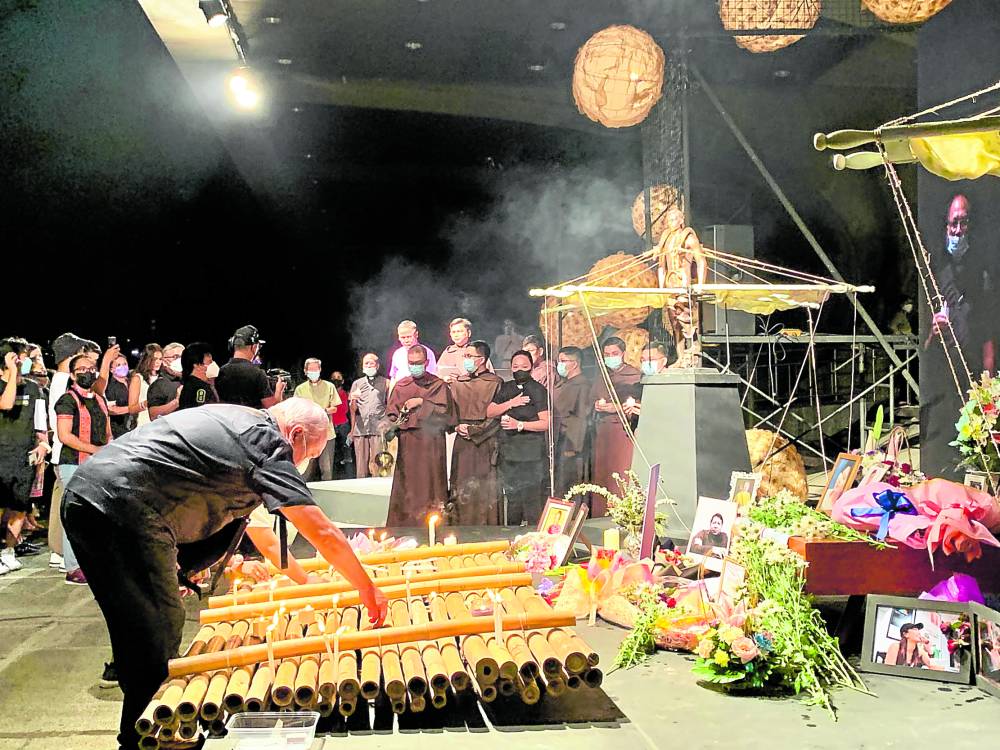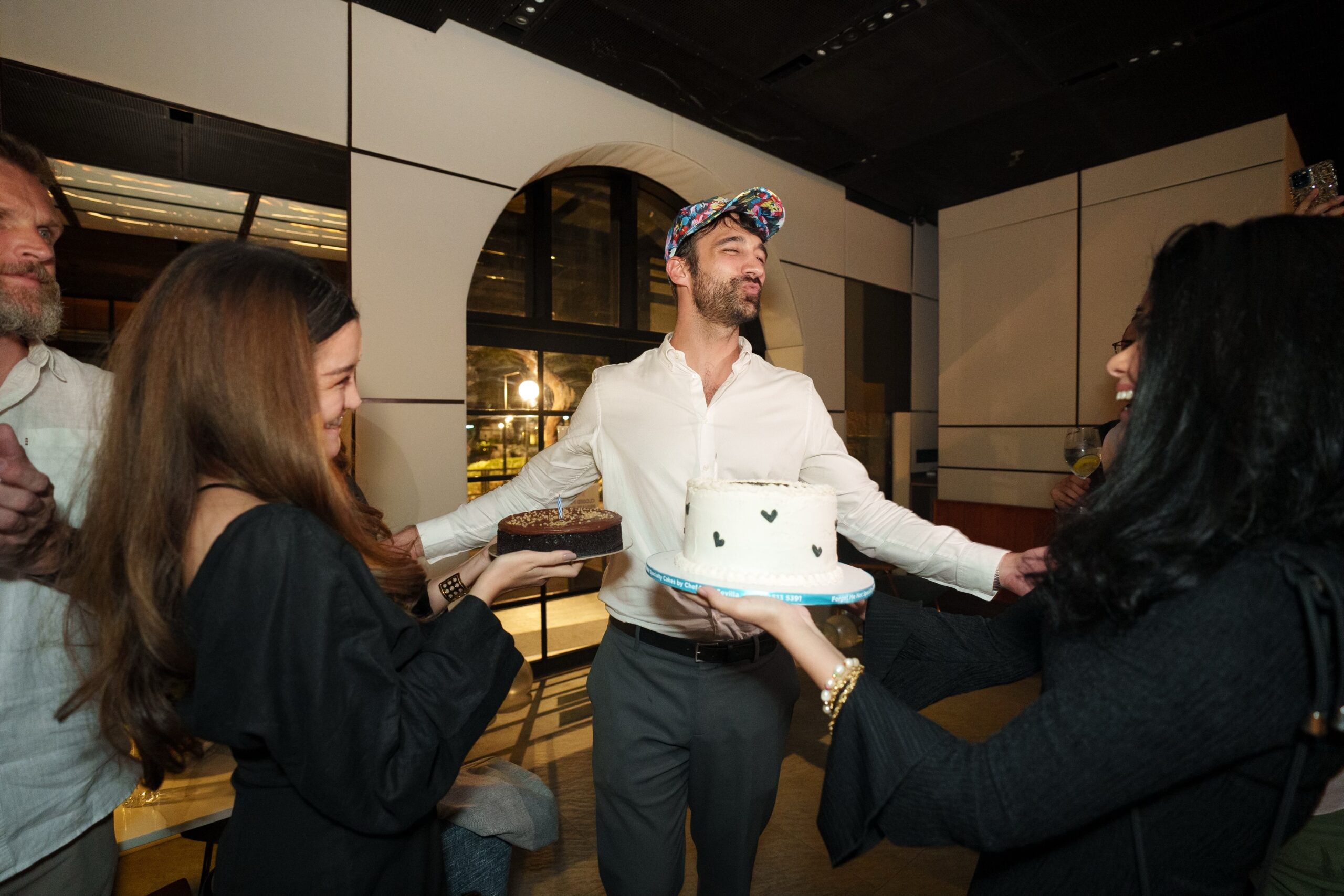
More than 59,000 Filipino lives were lost due to COVID-19 in the past two years. These 59,000 are people who did not receive the send-off that they deserved—no wakes, no burials, just online Masses via Zoom at the most. There were no spaces to share grief, and “pakikiramay”—the Filipino word for empathy—were only spoken online.
On April 9, Araw ng Kagitingan, the Cultural Center of the Philippines (CCP) and Concerned Artists of the Philippines (CAP) addressed the nation’s collective grief in “Damay + Dangal: Hanggang sa Muli,” a poignant service that celebrated the lives of exemplary Filipinos—artists, workers, volunteer teachers, human rights defenders, journalists, health workers and many more.
An altar was set up at the CCP ramp where families placed photos, memorabilia and flowers for their departed loved ones. There was a portrait of a ballerina, a comedian, a comic book artist, a young girl, other community and cultural workers, and artists who have passed on. A large LED screen served as a backdrop where more photos of people who passed away in the last two years were shown. Poems were read, prayers were offered, candles were lit and songs were sung.
Cherished memories
“We are not here to remember our pain and anguish, instead we are here to remember our love and happiness and all the cherished memories we have kept safe in our hearts,” said CCP chair Margie Moran Floirendo, who lost two brothers and 28 friends in the span of two years.
“‘Damay + Dangal: Hanggang sa Muli’ was done as a tribute to these souls to instill in our hearts and minds the remarkable deeds they have done and the happiness they have given us,” she added.
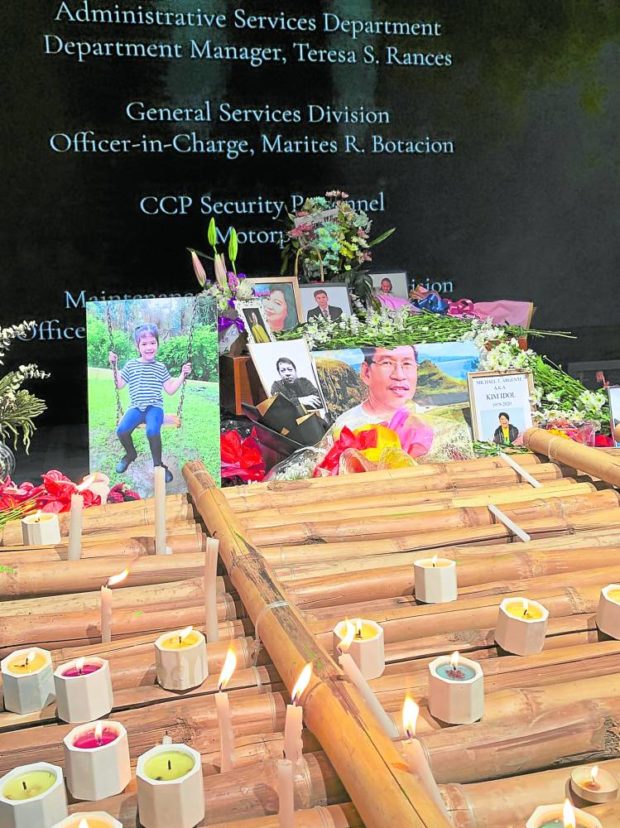
Visual artist Toym Imao created two sculptures called “Siningkawan” that flanked the community altar. The work, which was created in time for the second year of the pandemic, depicts two classic figures in heroic stances, with a snake—a symbol associated with the Greek God of medicine—running on their legs. These two figures stand strong despite the heavy burden that they carry—the siningkawan.
“The title ‘Siningkawan’ is based on the yoke, which is worn by cattle or carabao [for plowing]. Here it is used to depict four stretchers to amplify that idea that you have the [health-care] sector that has been overworked, stressed, but at the same time has maintained their composure and acted professionally amidst this pandemic,” Imao told Lifestyle in an interview.
“Hanggang sa Muli” began as a website with a memorial wall to celebrate and honor members of the cultural and arts sector, as well as supporters of the arts, who passed away during the two-year pandemic. It’s an online space where people can leave personal tributes for the departed.
Convergence of communities
“Damay + Dangal,” meanwhile, “is a convergence of communities demanding for answers, united by collective grief searching for action after such loss of lives and injustice,” said host Iza Calzado.
These two programs were combined on April 9 at the CCP, where members of different sectors were finally able to physically console one another.
“Around you are people who have also experienced grief of losing a loved one. Around you are people who have chosen to rise to their best today, come out of their homes and be part of the occasion. It is part of being Filipino, it is in our nature na makiramay, to show other people that we are here, we are beside them, to show that we care for them and that their loss is also our loss,” Floirendo said.
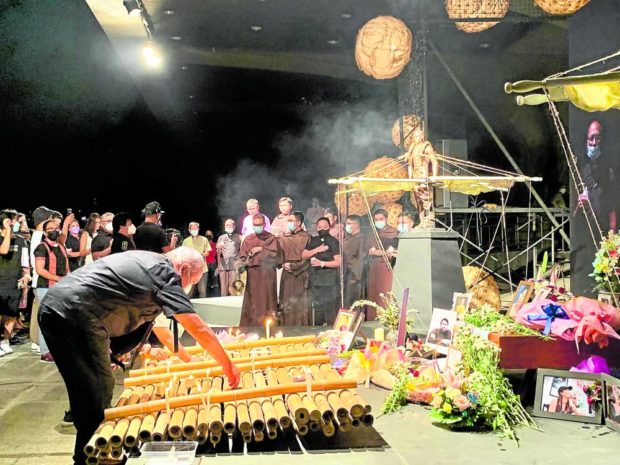
She added: “It is CCP’s hope that ‘Damay + Dangal,’ this event, will ease your pain, whether it is fresh or it still lingers. It is not wrong to feel pain, it is one of the most natural and inevitable things in the world. Pain [reminds] us of our humanity and pain can remind us that we are not alone in feeling it.”
The COVID-19 pandemic brought to the light not only the fragile state of the Philippine health-care system, it also exacerbated the inequality in the country.
The lockdown—one of the longest and harshest in the world—was highly militarized. Many Filipinos were arrested on grounds of supposed health-care protocol violations (including curfew). Human rights workers and volunteer teachers were detained, while some were killed in police operations. Actors, community workers, even hardworking medical front-liners who sought support for their efforts were instead relentlessly Red-tagged during the onslaught of COVID-19.
“Maybe what’s heartbreaking in this pandemic [is] the Red-tagging that was done. So even though the sadness is there, we can use it as conviction to clamor for real change,” Dr. Leni Jara said during the program. The soft-spoken doctor is the wife of Dr. Raul Jara, who was among the first health-care workers to die of COVID-19.
Many more died in the last 24 months due to different causes—due to other illnesses or struck down by bullets. And because of health restrictions, these people did not receive fitting farewells either, just as their loved ones did not get the chance to pay their respects and say goodbye.
Prime of their lives
There were also young people, in the prime of their lives, said Lifestyle contributor Pablo Tariman.
“While we mourn the abridged lives, we also mourn those who fell in their last seasons. We also mourn lives cut short by accidents, sudden illness and those who died peacefully in their sleep. Let’s not forget those who died from the bullets,” said Tariman, whose daughter, Kerima, died in a clash between the New People’s Army and the military.
During the program, the CCP and CAP also remembered members of different sectors who have been essential throughout history. These are the 179 health-care workers who died, as well as more than 3,000 medical professionals who were infected with COVID-19; the five lumad teachers who, according to autopsy reports, likely died in a “hail of bullets.” Then there were the Filipino workers whose lives were claimed by COVID-19.
“Unlike in the Kentex [fire incident] where we knew the exact number of deaths—72 in total—in this pandemic we are blind as to the number of workers who died due to the disease,” said Nadia de Leon of Institute for Occupational Health, Safety and Development.
Many factory workers were left with no choice but to work, even when they were feeling symptoms of COVID-19, because they did not have the option of missing a few days at work, she added.
Worse, workers and union members who asked for rightful compensation were met with violence, like Dandy Miguel.
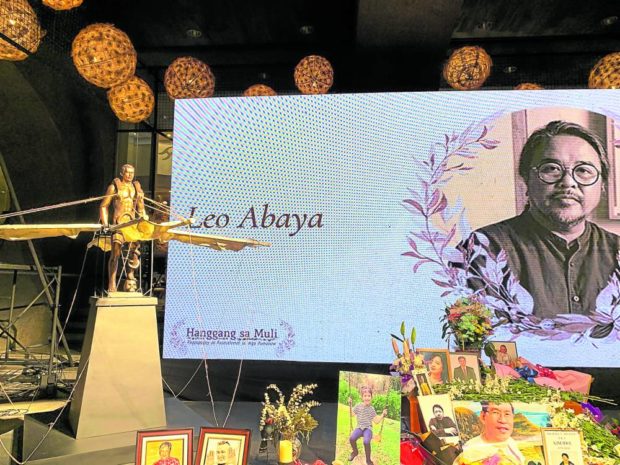
The threats against Filipino laborers persist until now, said De Leon. That’s why grief should be transformed to bravery.
“Where do we get the strength? There’s a well of inspiration in the lives of labor leaders who passed away. We should remember and thank them. But merely commemorating their bravery is not enough. We need to band and work together with courage,” she added.
Not just gone
Editha Burgos, the mother of missing activist Jonas Burgos, was also present at the memorial. For 14 years, she has carried on in her search for truth and justice.
The messages during the service showed that many people from different sectors still carry with them an indescribable amount of grief. And that the people who spoke want to make the lost lives meaningful by preventing tragic and preventable deaths.
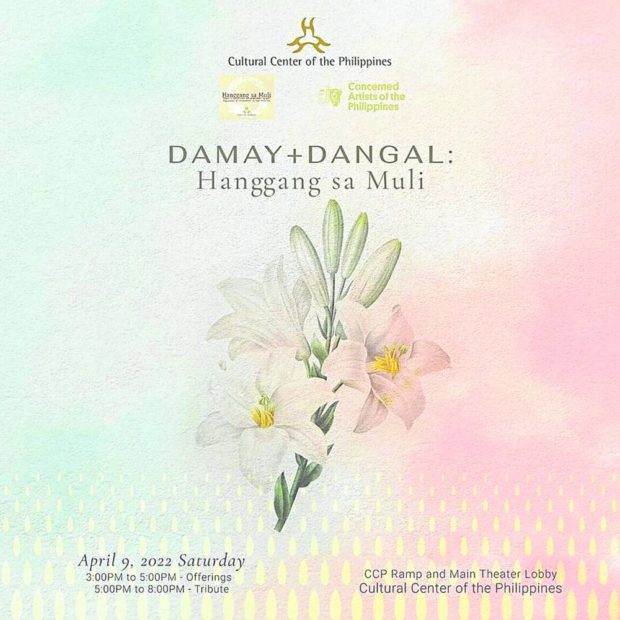
Throughout the program, Philippine Madrigal Singers filled the CCP lobby with notes of hope. They did a rendition of “Death Is Not to Die” and they harmonized with singer Danny Fabella in a hair-raising performance of “’Di Pangkaraniwan.” It was a fitting tribute to the heroes who live on through their art, their advocacy work and their contributions.
The song goes: “Mabuhay kayong mga ’di pangkaraniwan/ Pag-ibig ninyo ay walang hanggan/ Mabuhay kayong lubos ang katapatan/ Mabuhay kayo kailanman.”
“It’s important to honor people like this,” said Kristine Barangan, who attended the service with a photo of her sister-in-law, former Ballet Philippines member Sabrina Andrea Faye Barangan. “It means that their hard work, sleepless nights from rehearsals are recognized. It means they’re not just gone, because their colleagues recognize them for their work.” INQ

